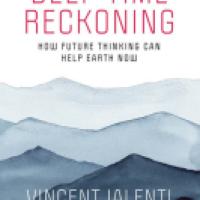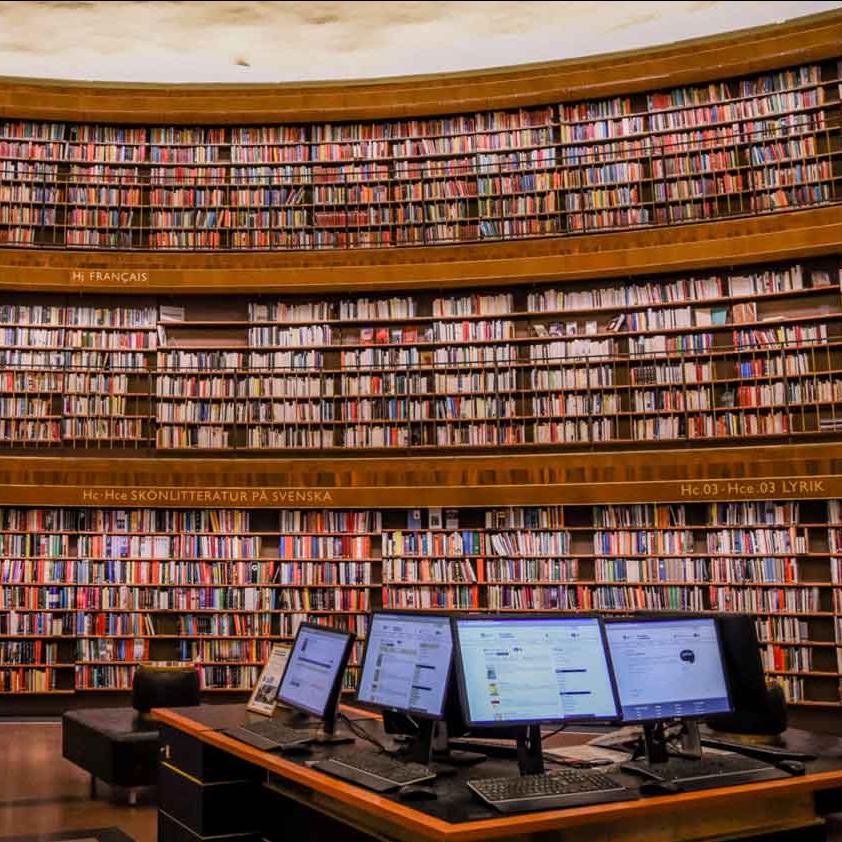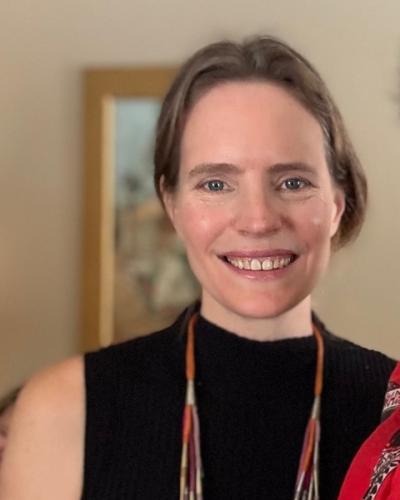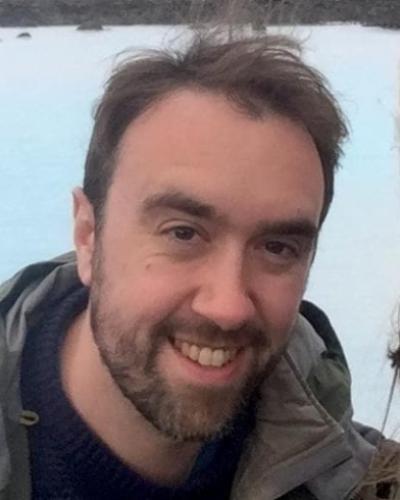In this new series, we highlight former Fellows’ monographs that grew out of their residency projects at the . This iteration of the Fellows' Q&A series features assistant research professor at George Washington University's Elliott School of International Affairs and 2015-16 "Time" Mellon Graduate Fellow, Vincent Ialenti. His book, Deep Time Reckoning, will be released on September 22, 2020. It is available for preorder online through Amazon, Barnes & Noble, and Penguin Random House.
Big Picture
Deep Time Reckoning is a response to two overlapping crises. The first is our current moment of global ecological devastation, which some call the Anthropocene. The second is the deflation of expertise: a time when political power is commonly gained through nationalist-populist mockery of expert knowledge, when experts’ voices are drowned out by clamors of knee-jerk tweets and self-published blogs, and when experts’ inquisitive spirits are dulled by corporate-bureaucratic “knowledge management” protocols, short-term contingent funding schemes, and ceaseless publish-or-perish productivity evaluations.
The Anthropocene debate has challenged populations to re-imagine their lives to better sync with Earth’s environment’s radical long-term. Today’s intellectual crises, however, have created new obstacles to this. It has become increasingly challenging to put forth rigorous visions of Earth’s future amidst widespread skepticism of liberal arts education, technocratic knowledge, and scientific research on the environment. This leads many contemporary societies into a state of futureless liminality: a condition of manic presentism that incessantly shoots down long-term proposals for escaping political-ecological gridlock.
deeptime.jpg
Alt Text
Deep Time Reckoning coverIn response, my book presents an anthropological case study of Finland’s radically longsighted nuclear waste repository Safety Case experts. These experts grappled with geological, hydrological, and ecological events – far future glaciations, climate changes, earthquakes, human and animal population shifts, and more – over the coming tens and hundreds of thousands of years. Drawing upon thirty-two months of fieldwork I conducted in Finland from 2012 to 2014, each chapter concludes with a series of practical proposals – I call them “reckonings” – for nurturing societal time-literacy and lengthening the time horizons of environmental governance.
In Particular
Each chapter of Deep Time Reckoning is, in part, a how-to guide in the art of imagining far future worlds. As an example, Chapter 1 explores how Finland’s Safety Case experts used analogical reasoning to help forecast the Olkiluoto nuclear waste repository’s far future conditions. My fieldwork informants studied a present-day glacial ice sheet near Kangerlussuaq, Greenland as an analogue – a stand-in feature used for the sake of comparison – to make inferences about the fate of a glacial ice sheet during and after the next ice age. They also studied Lake Lappajärvi – a crater lake that resulted from a meteor crashing into Finland roughly 73 million years ago – as an analogue for how Finland’s landscape could change over the next several ice ages.
While conducting fieldwork in Helsinki, I found myself following these analogies widely across time. This took me on an intellectual journey—one that made pit stops in the Roman Empire, a future Earth that looks like Mars, Gabon during our planet’s earliest history, other planets, ancient China, regions of South Africa in 2030, West Virginia during World War II, and beyond. Inspired by these long-term analogies, I conclude the chapter with five “reckonings.” Each reckoning brainstorms ways that integrating farsighted flights of analogy into our day-to-day ponderings can sharpen our deep time reckoning skills. This means routinely doing intellectual workouts or daily mental exercises that compare different objects across time and space—challenging oneself to reflect imaginatively on possible similarities and differences between distant past, far future, and present-day worlds.
Discovery
...I was surprised to discover that, even as I engaged with very alien far future worlds, most of the “reckonings” I ended up collecting pertained to some of the most ordinary features of everyday experience.
Before embarking for Finland in December 2011, I watched Danish filmmaker Michael Madsen’s 2010 documentary about the Olkiluoto repository, Into Eternity: A Film for the Future. The film painted Finland’s efforts to reckon deep time with aesthetics of desolation and bleakness, of austere machinery and industrial processes. Madsen portrayed the project as a place where dark souls tended to the world’s most lethal waste in a lifeless cave beneath a frigid island at the edge of the habitable world. The project was depicted as a place of gloom and gravity, stillness and darkness.
Yet, as I got know the Safety Case experts, I found their imaginations piqued by a different set of questions. My informants were caught up in the scientific, regulatory, and engineering technicalities of their work. They worked in modest-but-comfortable office buildings adorned with fluorescent lights, coffee machines, clean cafeterias, saunas, prints of artwork on the walls, and unostentatious brick exteriors. They ran models on computers, scrutinized regulatory requirements, and pored over datasets. They chatted lightly, drank coffee, attended meetings, and joked among themselves. This deromanticized what I had read in books and watched in films about nuclear waste’s deep time.
Following the Safety Case experts’ leads, I found myself focusing on how visions of far future Finlands sprouted from markedly short-term timespans: deadlines, schedules, funding disputes, project phases, career stages, daily plans, five-year plans, contingency plans, human life courses, and interpersonal dramas. Nuclear waste’s deep time’s aesthetics of gloom, awe, and profundity faded from view. They were displaced by the Safety Case project’s here and now. Deep time became shallow.
When I returned to Cornell to write about my experiences, I was surprised to discover that, even as I engaged with very alien far future worlds, most of the “reckonings” I ended up collecting pertained to some of the most ordinary features of everyday experience. These include the power of analogy (Chapter 1), the power of pattern-making (Chapter 2), the power of shifting and re-shifting perspectives (Chapter 3), and the problem of human mortality (Chapter 4). However, these familiarities are, as Deep Time Reckoning emphasizes, quite useful. Their sheer relatability can serve as a practical launching-off point for the rest of us as we strive to pursue long-termist learning ourselves amidst today’s ecological and intellectual downturns.
Fellowship
My year as a “Time” fellow at Cornell’s influenced my book project immensely. The Society’s thought-provoking lectures, workshops, lunches, and receptions provided a stimulating environment for thinking and re-thinking matters of temporality from several different angles. My fellow Fellows, and their wide range of academic interests, routinely pushed the boundaries of thought. Writing up at Cornell’s A.D. White House mansion also gave me the gift of time: time to transcribe my field interviews, to read through scholarly articles, and to make careful connections between existing social theories and my case study’s empirical details. The fellowship was, in short, a wonderful experience.







